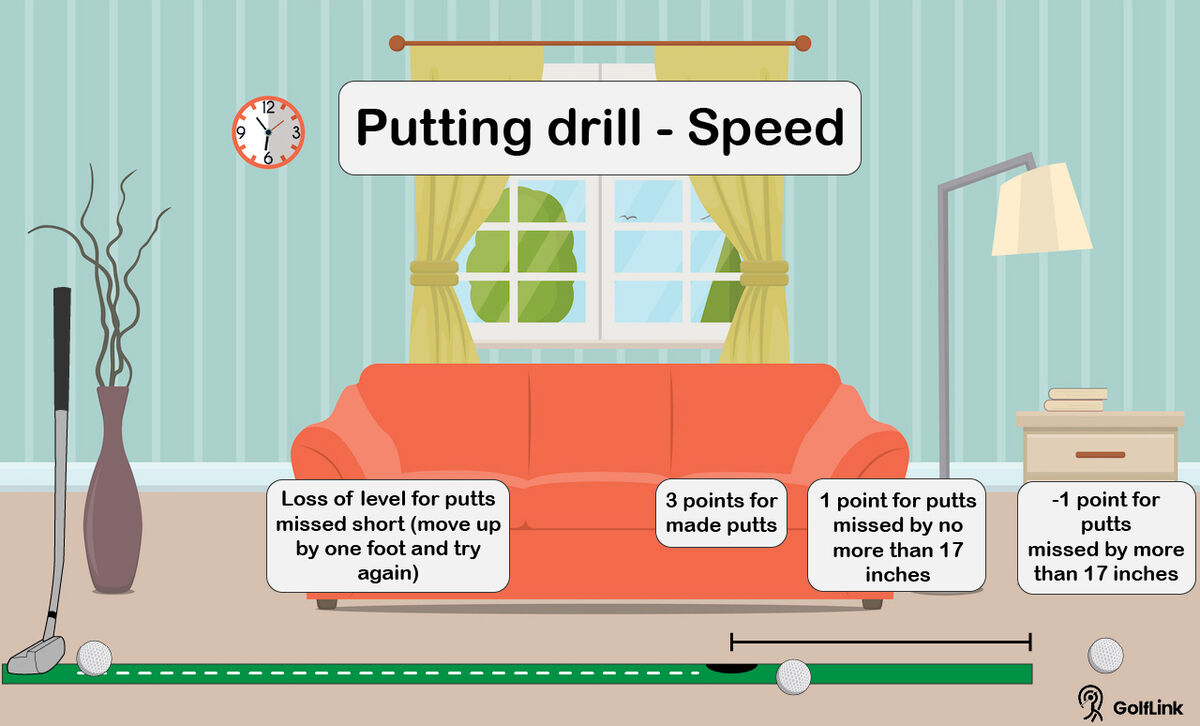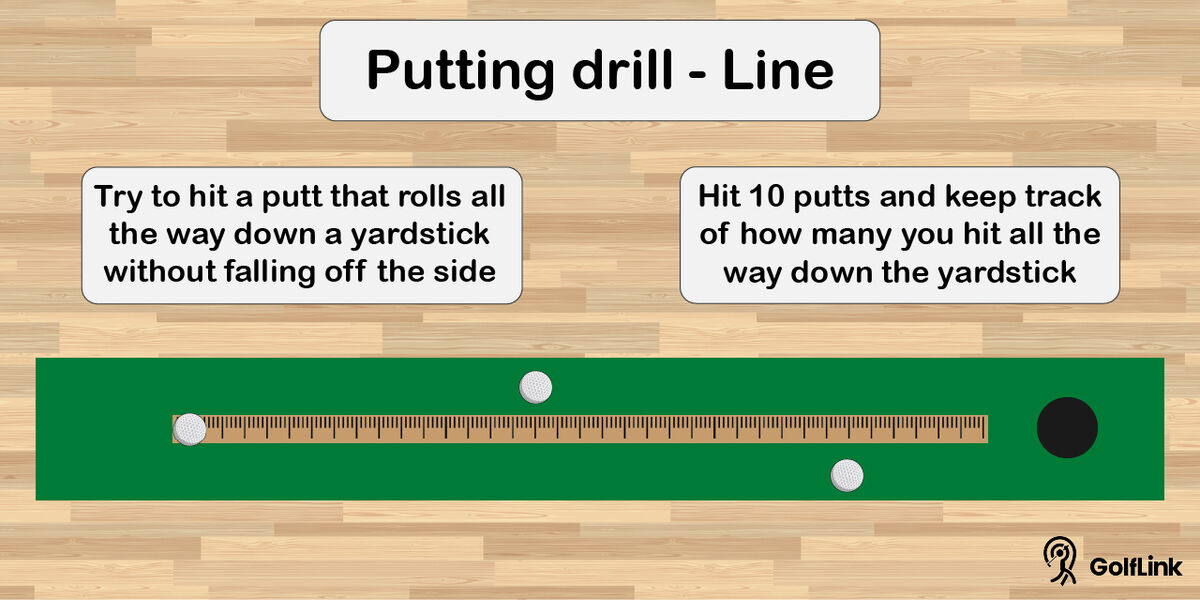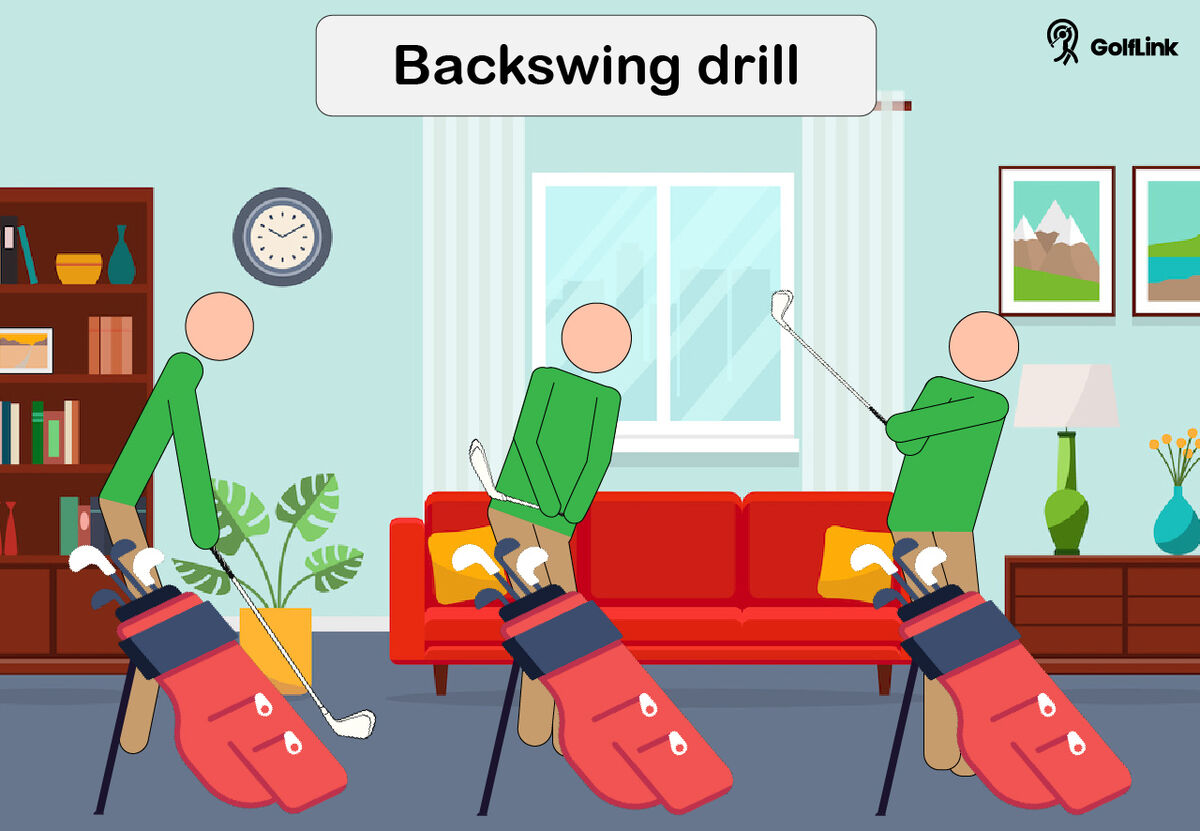Practicing Golf at Home: Tips & Drills to Try

Every golfer wants to learn how to get better at golf. The insatiable quest for perfection is what makes the game addicting to so many players. But most golfers don’t have the resources to spend hours at the driving range or practice green, perfecting their game. That’s why practicing golf at home is so important to improvement.
Making at-home golf practice part of your daily routine can really add up to noticeable improvement when you hit the course. Here’s a complete breakdown of how to practice golf at home, with a weekly practice plan of drills and exercises.
Putting Drills at Home
Not counting hitting a few rushed putts in the waning minutes before your tee time, how much time do you truly dedicate to practicing your putting? If your answer is “not as much as I should,” that’s okay, it means you’ve got some serious opportunity to play better golf.
What better place to practice your putting than the comfort of your own home? When it comes to putting there are two key elements that determine the success of your putt: speed and line. Work on these drills to dial in both, right from your living room. You can practice putting on a firm rug or carpet, but a minor investment in a practice putting mat could pay dividends if you’re serious about improvement.
Putting Drill for Speed

Here’s a golf stat that will never change: golfers make zero percent of putts that finish short of the hole. I wish this statement was so obvious that it didn’t need to be said, but I constantly watch mid-handicap golfers leave putts short from inside 10 feet, and quite frankly it’s inexcusable.
Tests have proven that the ideal speed of a putt is enough for it to finish 17 inches past the cup. Even if more aggressive speeds leads to a couple more (unspeakable) 3-putts, if you vow to never leave one short from inside 20 feet again, you’ll hole way more of those putts, and your average putts from that distance over the course of a round, month, and season, will plummet.
Here’s a great drill to help you hone in your putting speed at home. Hit six 6-foot putts on your practice putting mat or carpet, and use the following scoring method:
Made putt: 3 points
Missed putt past the hole, but by no more than 17 inches: 1 point
Missed putt more than 17 inches past the hole: lose 1 point
Missed putt short: loss of level
Score 11 or more points to win the level. Every time you win a level, move back one foot. Every time you lose a level, move forward one foot. Win the game by scoring 11 or more points from eight feet.
If you find this game to be too easy or difficult, modify the number of points needed to win a level to fit your skills. Just make sure it’s hard enough that it will actually help improve your putting.
Putting Drill for Improving Line

Dialing in your putting speed is a great step towards holing more putts, but it won’t mean much if you don’t start your putts on the correct line. We mentioned earlier that speed and line are the two key elements to a successful putt, but the fact is that line can be broken down into two more elements. Your ability to read the green and the line of your putt is one thing, and your ability to strike a quality putt that starts on your intended line is another.
Starting your putt on your intended line all comes down to delivering the clubface square to your target line. Without even realizing it, you could have a tendency to deliver your putter a degree or two open or closed at impact. When your target is a tiny, 4.25-inch cup, every degree counts.
To perfect your face angle grab a yardstick and lay it on your practice putting mat. With a ball at one end of the yardstick, practice hitting putts that roll all the way down the yardstick and off the other end without falling off the side. This drill may seem difficult at first, but it will force you to deliver your clubface square, a make-or-break habit for holing putts. For your own sanity, make sure to practice this drill on a level surface.
Count how many out of 10 putts you can roll all the way down the yardstick. Keep track of your record and set that as the benchmark to beat. If you struggle to roll putts off the end of the yardstick, consider getting professionally fit for a putter, as your equipment may be ill-fit for your stroke.
Golf Alignment Practice
Hitting the golf ball straight is hard enough as it is. Trying to hit the ball straight when you’re not aligned to your target properly is nearly impossible. If you haven’t spent much time working on your alignment lately, making it part of your at-home golf practice routine could really help your game.
“When I play golf with average golfers, they’re all over the place. A lot of times they’re too far left, or too far right,” said Mike McGetrick, one of America’s top golf instructors. “If you misaim, what happens is that you have to create compensations in your golf swing in order to get the golf ball to go to the target.”
To perfect your aim every time, practice your alignment at home. First, take an alignment stick or a golf club, and lie it on the ground between you and your ball, parallel to your target line. Next, set up to the ball and use the stick on the ground to ensure that your alignment is perfect. Your feet, knees, hips and shoulders should all be parallel to your target line. Pick different targets in your living room or backyard and practice setting up with perfect alignment every time.
Perfect Plane Backswing Drill

Once you’re aligned properly, getting your golf swing started on the correct plane is the next step to a successful swing. If you get to the top of the backswing with strong fundamentals, you’ve got a great chance of hitting a good golf shot.
Here’s a great golf backswing drill to help you take the club away on-plane consistently. If you have a stand bag, set it up behind you so the base of the bag is just inside the ball and the top of the bag is behind your trail hip. Take your stance and notice how the angle of your bag replicates the angle of your shaft at address.
Now slowly take the club back, tracing your golf bag with the clubhead as you go back. Follow the clubhead with your eyes and notice that at every checkpoint, it’s on-plane. As you hinge the club past parallel, the shaft will be parallel to the bag. Finally, as you get to the top of the backswing (if ceiling-height allows), your lead arm will be parallel to the bag.
Since you’re not making an aggressive takeaway or downswing, you can work on this drill in the house, or outside.
Golf Fitness Exercise
Swinging harder isn’t the only way to add distance to your golf game. Strengthening the muscles you use in your golf swing is a great way to add more distance from home. Simply incorporating some exercises that strengthen your golf-specific muscles into your workout routine can be a great way to improve your game from home.
To add some power to your swing, try strengthening your glutes with hip extensions. Lay on the ground on your back, with your knees bent at a 90 degree angle, feet flat on the floor and arms crossed on your chest. Next, lift your butt off the ground and hold that position for 5-10 seconds. Aim for three sets of 8-12 reps of these during your workout.
Weekly Home Golf Practice Plan
Use these drills for your first week of golf practice at home, then swap them out with different drills -- focusing on the same fundamental skills -- every other week to keep things fresh. Commit to 15-20 minutes per day, six days a week for a month and see the difference it makes in your game.
| Day | Monday | Tuesday | Wednesday | Thursday | Friday | Saturday | Sunday |
| Drill | Putting Speed Drill | Alignment Practice | Golf Fitness Exercise | OFF | Swing Plane Drill | Putting Line Drill | Golf Fitness Exercise |
| Duration | Until you win! | 15-20 minutes | 3 sets of 8-12 reps | -- | 15-20 minutes | 15-20 minutes (track your record) | 3 sets of 8-12 reps |